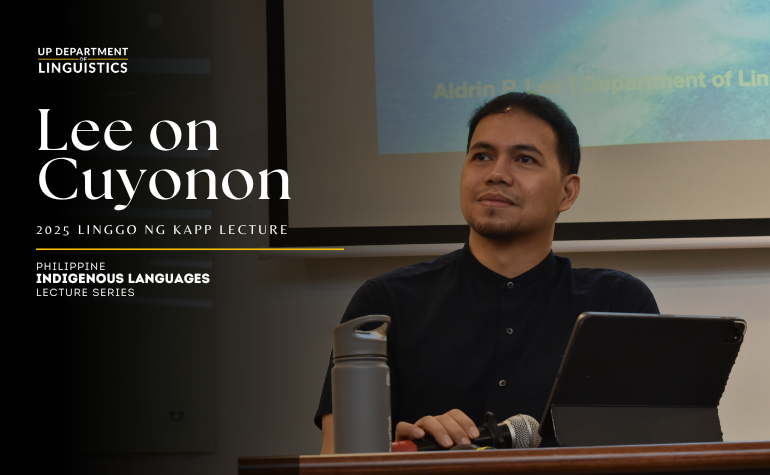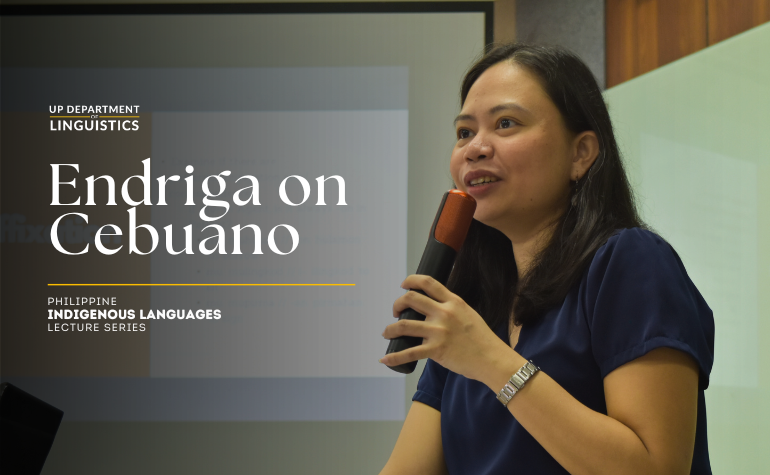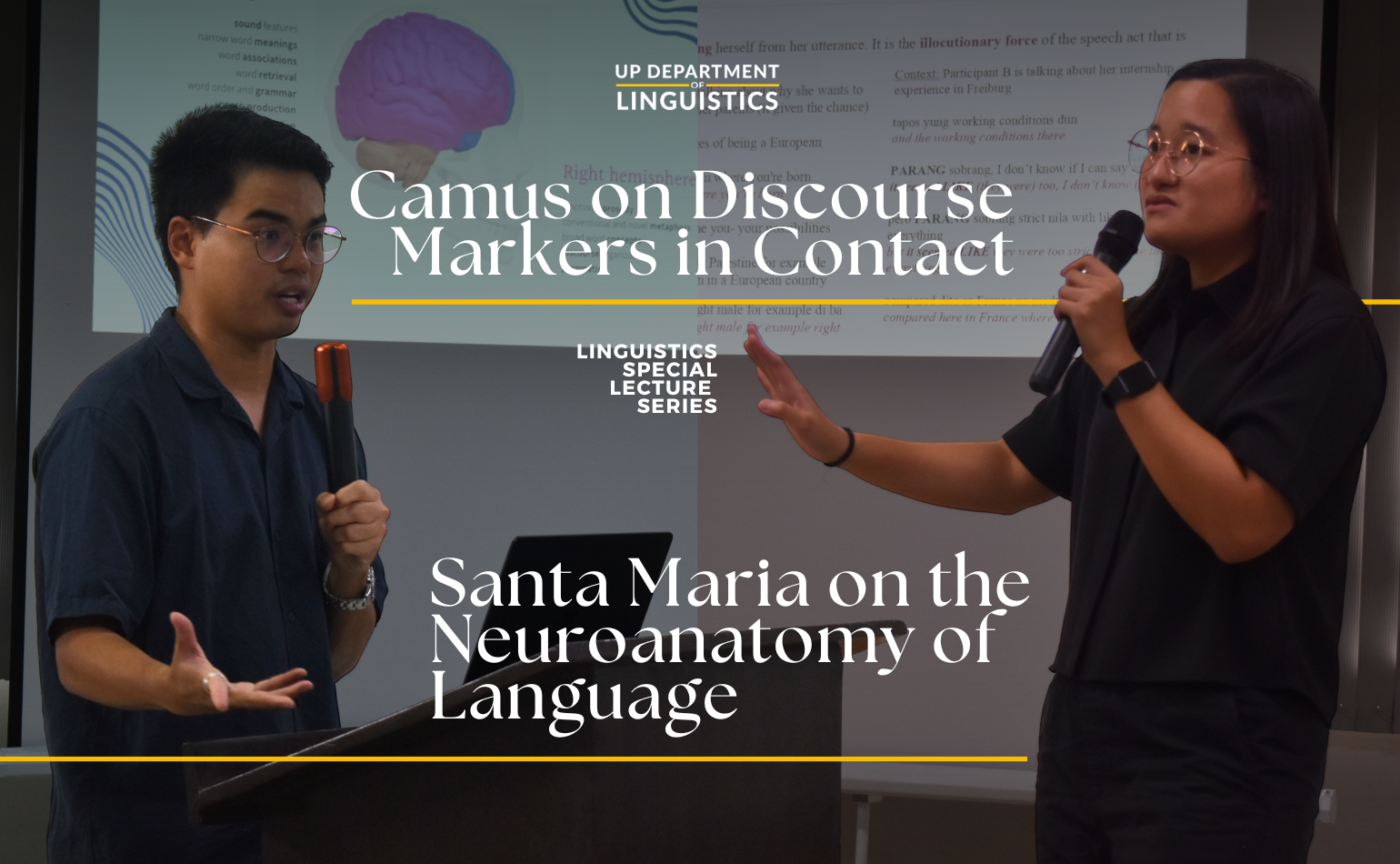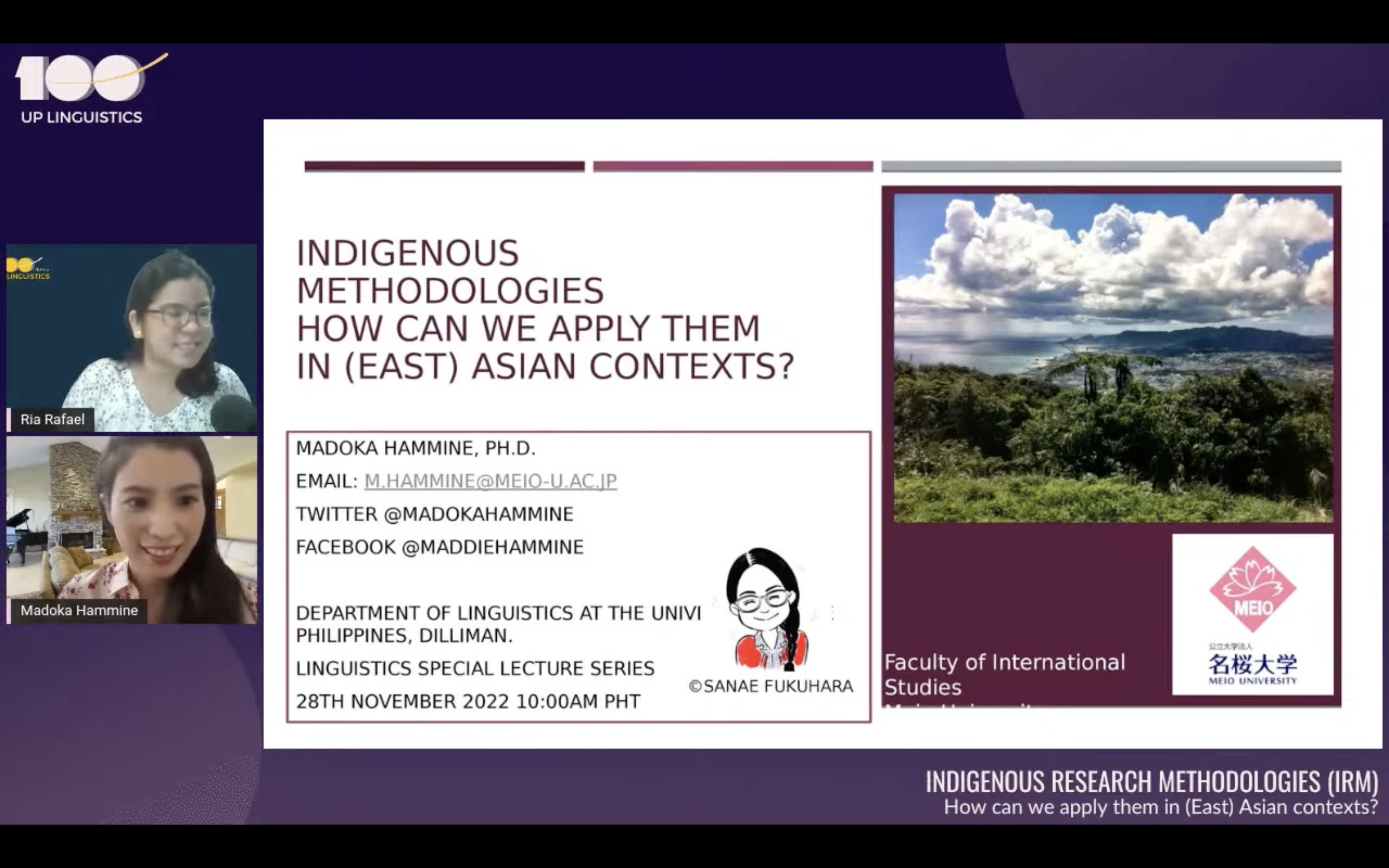
For the final installment of the 2022 Linguistics Special Lecture Series (LSLS), Dr. Madoka Hammine (Meio University) presented her lecture titled “Indigenous Research Methodologies (IRM): How Can We Apply Them in (East) Asian Contexts?” The webinar was held last November 28, and organized in cooperation with The Katig Collective. A recording of this lecture is also available on the Department’s YouTube channel.
In her introduction, Hammine recounted how her interaction with Sámi indigenous peoples in Finland through her PhD research at the University of Lapland made her wonder why her indigenous language was not taught in school. Exposure to language revitalization efforts in Europe helped her identify and realize her research interest. Sámi languages are spoken in Norway, Sweden, Finland, and some parts of Russia, and all 10 Sámi languages are classified as endangered today.
Hammine also shared titles of works that guided her study. These include Research is Ceremony (2008), Sámi Education (2012), Revitalising Indigenous Languages (2013), and Indigenous Adult Language Revitalization and Education (2019). She also highlighted the contribution of critical texts authored by indigenous women scholars such as Bagele Chilisa’s Indigenous Research Methodologies (2019), Margaret Kovach’s Indigenous Methodologies: Characteristics, Conversations, and Contexts (2021), and Linda Tuhiwai Smith’s Decolonizing Methodologies (2021).
She then explained her positionality by talking a bit about her family’s origin and by expounding on the linguistic situation of Japan and the case of the Ryukyuan people. The islands of Ryukyu, which include Okinawa, house languages and cultures treated as different or foreign by mainlanders. Since the forced annexation of the Ryukyu Islands by the Japanese, the indigeneity of the Ryukyuan people had not been recognized by Japan’s national government, which systematically attempted to supplant their language, culture, and traditions. This has led to the current situation in Japan where, according to Hammine, “indigeneity […] is very invisible.” Lingering intergenerational trauma and coercive assimilation policies compel people to remain silent about their indigeneity and refrain them from demanding for due recognition.
Hammine underscored the necessity of listening to indigenous voices and conducting collaborative projects that aim to improve relationships between scholars and speaking communities by considering the effects of a project on a community. Discourses on power relations, standardization, and privilege must always be taken into account and recognized. Most importantly, different perspectives, including those of the indigenous peoples, must be acknowledged and valued.
To sum up her talk, Hammine shared different points to consider when applying IRM in Japan and other countries East Asia. These involve the concepts of indigeneity, language rights, English language hegemony, and national and/or standard languages.
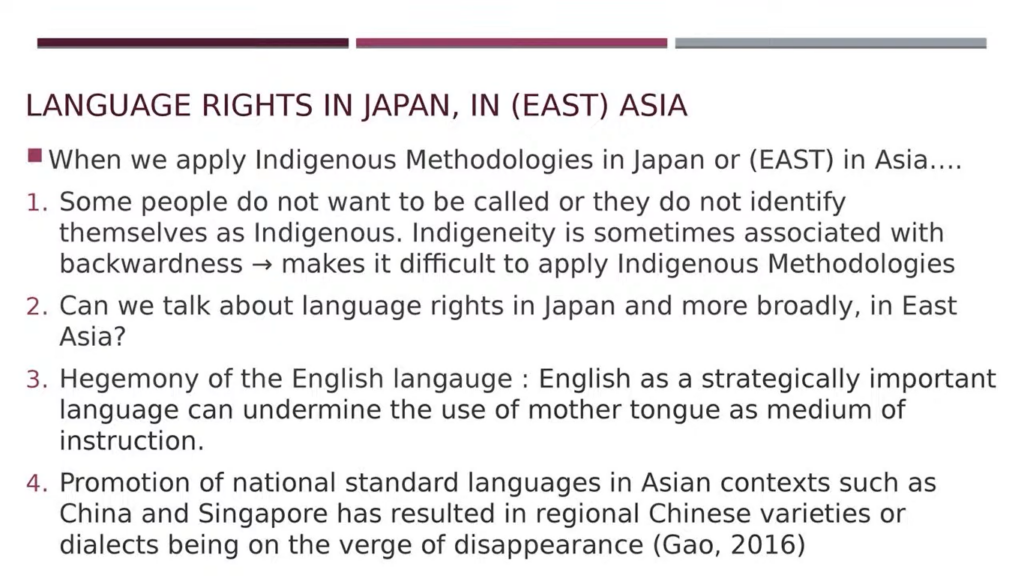
During the open forum, the audience sent questions regarding Ryukyuan documentation and revitalization efforts, the engagement of the youth in language activism, and possible actions to address discrimination against linguistic groups. It can be gleaned from this discussion that despite the association of senjumi (‘being indigenous’) with backwardness, the (grand)parent generation’s apprehension toward native tongues, and several instances that lead to harassment and discrimination, the emerging participation of various stakeholders is a crucial contribution to forwarding and expanding the conversations regarding indigenous peoples’ recognition and language rights in Japan.
Hammine also shared her translation of “How Far I’ll Go,” a song from the movie Moana (2016), into the southern Okinawan language Miyara Yaeyaman. Hammine comments that this type of cultural project is a good way to raise awareness and appreciation of the beauty and value of Japanese indigenous languages.
You can watch the recording of the talk on our YouTube channel.
Published by Patricia Anne Asuncion

